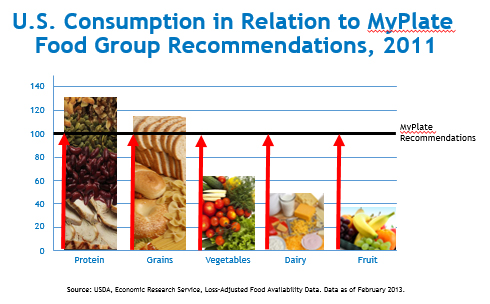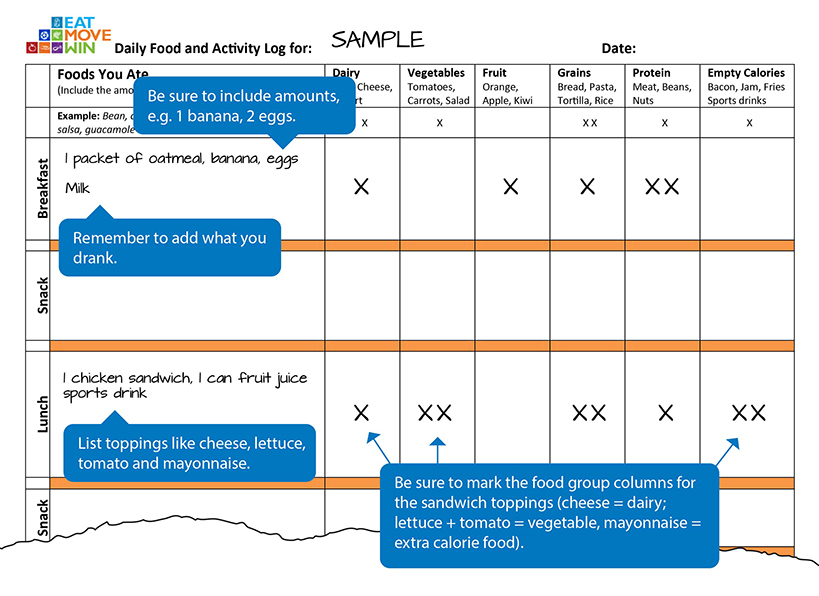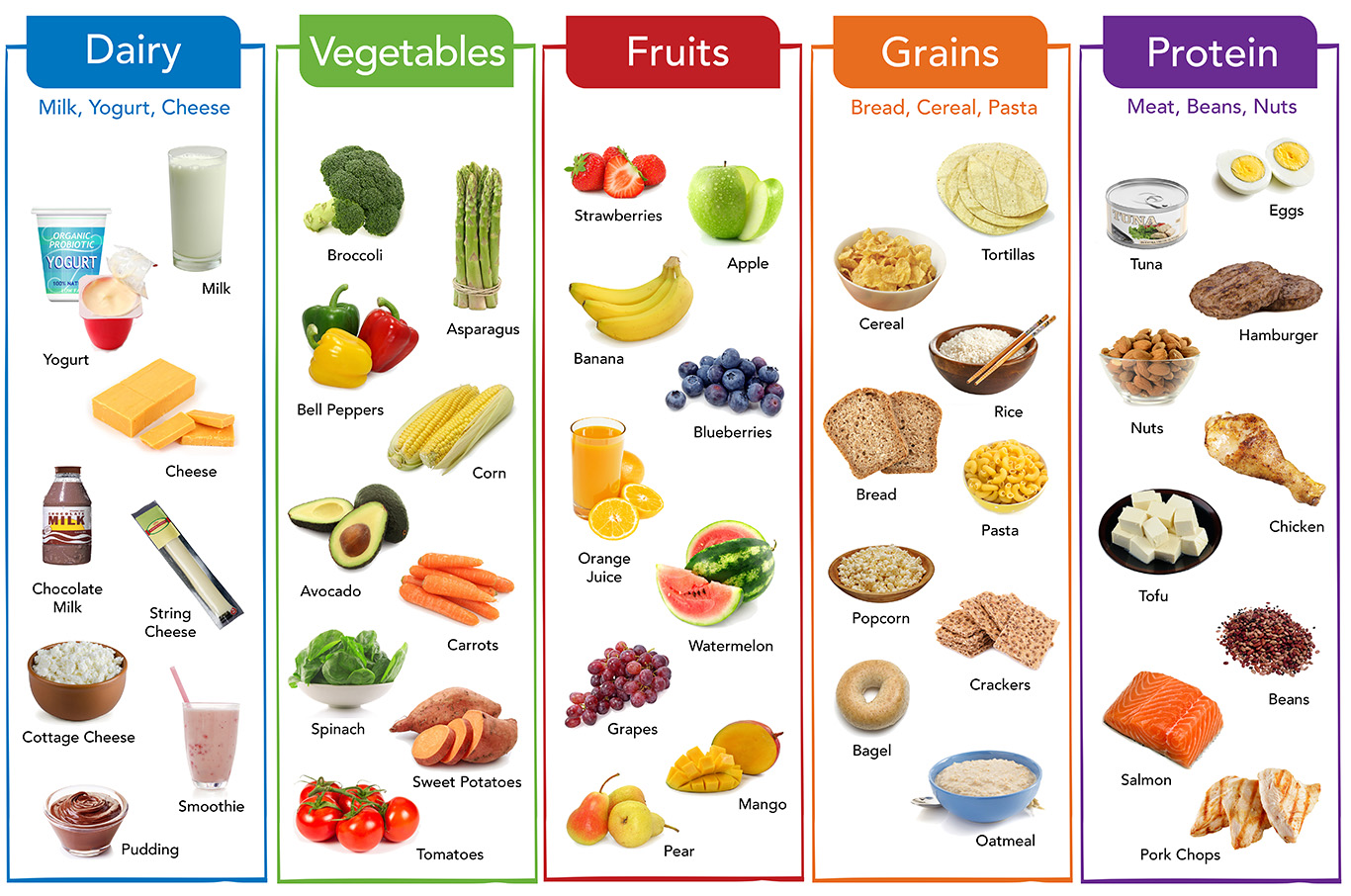Nutrition education designed for high school students. Free Educator Guide to help instructors.

This page as well as Food is Fuel, Optimal Nutrition and Eating Patterns are designed for high school students and adapted from the online nutrition curriculum Eat Move Win. Teachers are encouraged to add these pages to their Google Classroom and download the free Let’s Eat Healthy Educator’s Guide that provides simple instructions for using these online educational resources.
Examine the food groups and learn how to evaluate your eating pattern to make improvements. Small changes can add up over time to improve your health and energy levels.
Watch this nutrition video to learn more.
See how your choices compare with others learning about nutrition.

Food is essential for life. Not only does it provide energy and nutrients, but it can bring people together in friendship and celebration. While you may be used to eating three meals a day, many people in the U.S. don’t get enough to eat every day. And being well-fed doesn’t necessarily mean being well-nourished, or getting the right nutrients to have the best health possible. Learning to eat a healthy diet is important at every stage of life.
So what is in food that makes it so important? Food has nutrients in the form of energy or vitamins and minerals. Nutrients are substances that help the body grow, repair tissues and give energy to the body’s systems.
There are
two categories of nutrients:
Only a few nutrients can be stored in the body, and then only for a short time. Eating a variety of foods each day ensures the body gets all of the nutrients it needs.

Whole foods, or those that haven’t been changed much from their original form, are the best way to get a variety of nutrients. Ultra-processed foods, such as chips, donuts and cookies, can be fun to eat, but they provide little to no nutrition. They’re often called “empty calorie” foods. It’s best to eat less of those foods, and more of the foods that fuel the body.
One way to eat more important nutrients is to choose foods from each of the food groups. The food groups in MyPlate—dairy, vegetables, fruits, grains and protein are categorized by the main nutrients they contain. Many Americans do not eat enough vegetables, fruits or dairy products (see graph).
As a teenager, it’s especially important to eat enough of the foods that fall below recommended levels. Growth and change occurs until adulthood, and the nutrients in these foods are essential. Eating from all of the food groups every day helps the body get the nutrients it needs.

Do you remember what you ate this morning? Yesterday? To better understand your eating habits, record what you ate yesterday by using the Daily Food and Activity Log.
Write down what you ate yesterday and how much.

Evaluate your food list. Put a mark in each column where you think the food or something in the food fits. See examples below.

Estimate the number of minutes you were active and decide if it was low, medium or high intensity. Be sure to count fun activities with friends, such as walking around the mall or to an off-campus lunch place.

Think About It: Double-check that you've put a mark in every classification that fits with what you ate. Then, evaluate your empty-calorie foods. Can you trade a food from the food groups for an empty calorie food? How does that meet the taste you wanted?

You got a taste for classifying foods into groups as you logged what you ate yesterday. What did you use as your guide? Perhaps you thought a food was a protein since it is brown. Or perhaps you said eggs were in the dairy group because you see them in the grocery next to the milk.
Scientifically, any food with a seed in it, such as a tomato or avocado is a fruit. But food-wise, tomatoes and avocados are classified in the vegetables group because they are eaten as vegetables and are not as sweet as, say, a peach or a kiwi. Bacon, on the other hand, is classified as an empty-calorie food because it has more fat and salt than protein. The US Department of Agriculture (USDA) puts foods into groups based on the main nutrients they contain. As a result, eggs are in the protein group because of their protein content.
Using the food groups is a helpful tool for learning about different foods and the nutrients they contain. All of the foods you eat become a pattern, and the choices you make over time matter most.
Many people eat foods that don’t
fit into any of the food groups, like chips, bacon and sports drinks. These examples are low in nutrients and high in calories, unhealthy fat, sodium (salt) and/or added sugar. Empty-calorie foods can be part of a nutritious meal
or snack—in limited amounts. If they are a large part of your daily eating pattern, it may be time to try including more nutritious foods from the food groups.


Food fuels the body, so more physical activity requires more fuel. Likewise, it takes a lot of physical effort to burn unneeded or extra calories.
Exercise is important for many reasons, and it’s recommended that teens get 60 minutes of activity per day. The benefits of exercise include lower risk of depression, better fitness and stronger bones. School physical activity programs have even been shown to improve people’s ability to pay attention and do well in school.
How can you be more active?
Make a schedule you can stick to and aim for progress, not perfection.
Let's Eat Healthy! Now it is time to plan for change. Take the below short survey to help you set a realistic small goal toward healthier eating.
Continue to Lesson 2 and learn how Food Is Fuel.